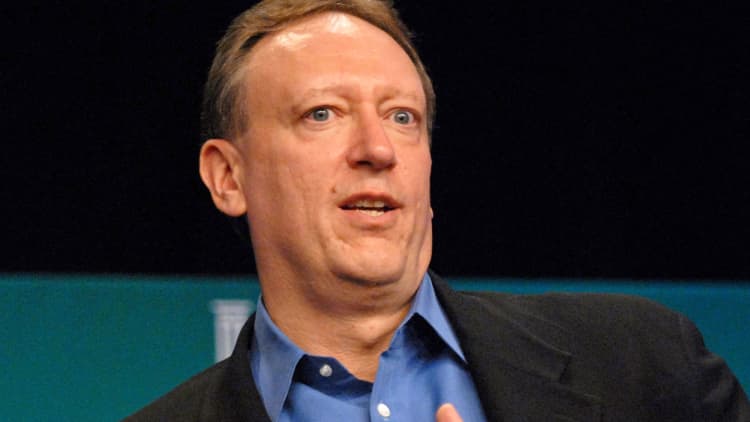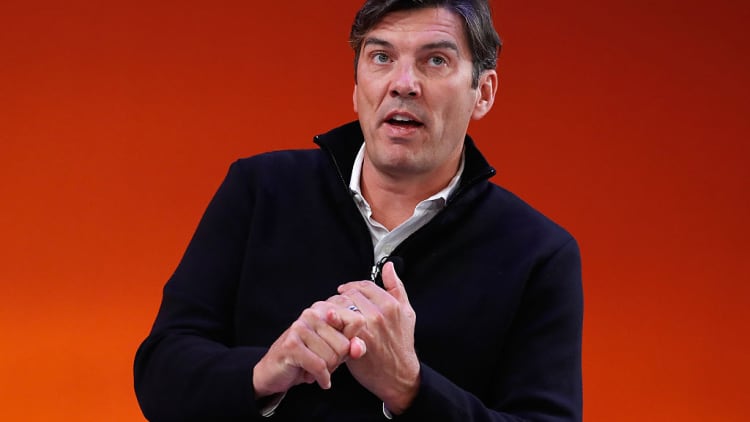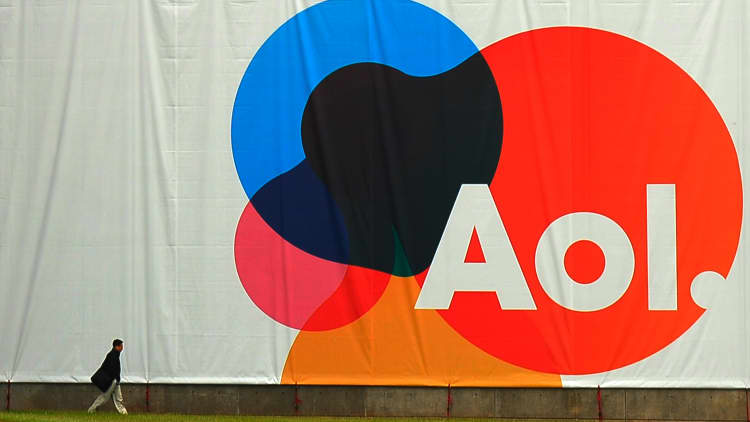
Add another chapter to your internet revisionist history books: AOL held talks to buy both Facebook and YouTube in 2006 and considered taking a large minority stake in Tencent in 2004.
Obviously none of this happened — and the board of Time Warner is to blame, said ex-AOL CEO Jon Miller in an exclusive CNBC interview. Miller has never discussed the failed talks publicly before.
Miller said he discussed buying YouTube from the founders, Chad Hurley, Steve Chen and Jawed Karim, in January and July 2006. He spoke with Facebook founder Mark Zuckerberg in the spring of that year, he said. The Tencent talks were held in 2004, Miller said.
"We wanted to take some shots," Miller said. "We had a line on buying YouTube before anybody else. We had an opportunity to step in with Facebook when Yahoo stumbled. We had a chance to maybe to step in to Tencent."
Yahoo made about a $1 billion offer to buy Facebook in 2006, an offer Zuckerberg rejected, according to multiple reports. Facebook's market capitalization today is more than $510 billion. Google bought YouTube in 2006 for $1.65 billion in what's now known as one of the greatest acquisitions ever. Morgan Stanley estimated YouTube's value at about $160 billion last year.
Tencent, a Chinese technology company that owns WeChat and a number of video game assets, is now worth nearly $400 billion. Miller said he held discussions to buy a stake of more than 20%.
"At all those turns we just didn't get the support to do that. We knew we had to take some shots to change the trajectory -- that what we were doing was not sufficient. Necessary, but not sufficient. And it was very difficult when we couldn't take those shots on what would have been major game-changing ideas."
Miller served as AOL's CEO from 2002 to 2006, two years after AOL acquired Time Warner in 2000 for $165 billion, the second-largest deal in history. Over the course of his tenure, Time Warner took back control of the merged entity as AOL's revenue dwindled. Time Warner dropped the AOL name from the corporate entity in 2003. The company's board didn't want to redouble its efforts to buy internet companies after AOL had distracted Time Warner from its core competencies in content creation and cable distribution, Miller said.
Still, AOL returned billions of dollars in cash to the parent company throughout Miller's tenure. AOL's online business still had nearly 20 million subscribers in 2006, generating close to $6 billion a year in revenue.
"We were able to spend less than half a billion on acquisitions," Miller said. "You need to be able to be in the acquisition game. Google did buy YouTube, it bought Android, it's bought many other things since. We were really getting shut out of that even as we sort of gained operational momentum."
Miller said he never got support from executives internally at Time Warner Cable to make AOL the front-facing portal for its cable broadband customers. Miller even tried to strike a deal with another cable provider, Comcast, when Time Warner Cable rebuffed him, though that, too, failed.
The AOL culture deteriorated as Time Warner's board stunted its ability to grow, said Miller, ultimately leading to a spin out of AOL in 2009.
The button under the desk
As a newly publicly traded company — now with a valuation that cratered to about $1 billion — AOL hired Tim Armstrong as its new CEO.

The AOL culture was so toxic when Armstrong took the job that on his first day, he discovered there was a button under his desk specifically meant to protect him from disgruntled employees.
Here's how Armstrong described it in his interview with CNBC:
"My first day starting at AOL, I went into the office I was in, and I was trying to find a plug for my laptop, and I couldn't find a plug-in. I was underneath the desk, and there was a white button underneath the desk, and I didn't know what it was. So I pressed the white button and about three or four security guards came running into the office I was in. And I said, 'What are you guys doing here?' And they said, 'We're here to protect you.' And I said, 'We're on the fourth (or fifth) floor and there's a security guard downstairs, why are you guys up here?' And they said, 'Well, we're not here just to protect you from the outside world, we're here to protect you from the inside world, also -- inside the company.'"
Armstrong said he immediately asked to knock down the walls in the office and went to an open-floor seating model to reverse the culture of fear. Armstrong would later sell AOL to Verizon for $4.4 billion in 2015.

Disclosure: Comcast is the owner of NBCUniversal, parent company of CNBC and CNBC.com.
Follow @CNBCtech on Twitter for the latest tech industry news.


